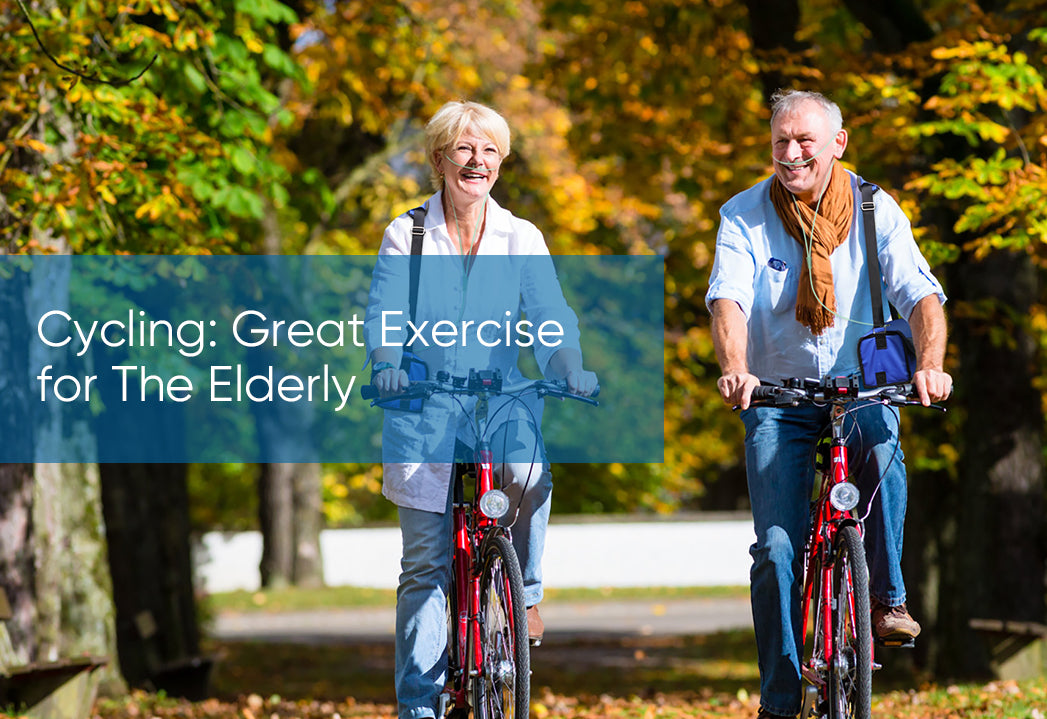
Cycling: Great Exercise for The Elderly
Cycling is a great form of exercise for the elderly as it is low-impact, easy on the joints, and can improve cardiovascular and lung health. It can also help improve muscle strength and flexibility and can be a fun way to get outdoors and stay active. However, many may question whether cycling may be too burdensome for them. It's important for older people to consult with a healthcare provider before starting any new exercise routine, and to start gentally and increase intensity and duration as tolerance allows. Additionally, older adults should use appropriate safety gear, such as a helmet and reflective clothing when cycling to enjoy the fun.
The priority of cycling for the elderly is to keep them healthy and safe. The followings are what you should pay attention to during the ride to lower the risk of any sports injuries.
Take your time
Always keep in mind that you are no longer in your youth. No matter how well you feel, your physical strength, muscles, and joints have already declined, and there may even be some injuries to the ligaments which are already forgotten. So don't give all out and don't push yourself. In beginning, you should take it slow and don't make any long-distance rides. It is not impossible, but it is not suitable. You can pick up longer distances as your strength and endurance gradually improve.
Choose a bike that suits you
For low-impact exercise, you don't need a bike that is too pricey or professional. But make sure you get one that suits your size. Many people would just choose to ride their family's bikes for convenience. But the bike does not conform to your body shape, possibly resulting in incorrect riding posture, which is highly likely to hurt the knee cap and oppress the waist. In the process of cycling, if the frame is too large or too small, the incorrect riding posture will lead to serious wear to your joints, feet, and patella. In addition, the height of the bicycle seat cushion must be adjusted to suit your sitting height, so that the position of the pedal lower point is correct and it is not easy to hurt your knees. Therefore, the size of the car must be in line with your body shape.
Equip yourself
To ride safely, accessories and parts are indispensable. Choose a bicycle helmet that is specially designed for cycling. Wearing gloves can help alleviate hand numbness when you hold the steering for too long. In winter, it is recommended to wear gloves that cover the whole hand to prevent freezing temperatures in cold weather. Before going on the road, turn on the front and rear lights, and choose bright clothes and pants, which make you easily noticed, so as to avoid being chased or hit by others. As for shoes, if you wear locked shoes, we advise you not to lock them, because the elderly react relatively more slowly. You should also check the tires and brakes before going on the road.
Take rests
The strength, endurance, explosive power of muscle, and cardio-pulmonary function of aged people are weaker than that of a younger age. Usually, during the ride, if you feel a little wheezing, your heart beats a little fast, or you are sweating, it's about time to rest. Additionally, if you can't finish a sentence clearly during the ride, but have been panting, it means that the exercise has exceeded what you are capable of. The best exercise impact for you should be keeping a heart rate no more than 60% of your max heart rate (220 minus your age). It is recommended to use the training platform at home or a gym nearby to try out and get familiar with the proper amount of exercise you need before actually riding on the road.
Energy supply
It is necessary to replenish the lost body fluid and maintain blood sugar levels during exercise. So, it is very important to take in water and electrolyte. Drink about 600ml water every hour by sipping a few ounces every 15 minutes. Don't drink water after you feel thirsty. The human body is not sensitive to the feeling of dehydration. When the feeling of thirst occurs, your body has lost 1-2 liters of water already, meaning the dissipation, nutrient transportation, and metabolic function of your body are affected.
If you exercise for more than an hour, it is also recommended to take in an appropriate amount of salty food or choose sports drinks with a sugar content of about 4-8% to replenish water, sugar, and electrolyte. Avoid concentrated sugar drinks like juice and soda since excessive sugar will slow down the absorption of water. As for food, choose what is rich in carbohydrates, such as bananas, cookies, chocolate, small meal bags, and energy bars, which can quickly provide energy and maintain blood sugar levels.
Post-exercise recovery should be attached with much importance. Choose foods that can quickly restore muscle energy and have them within 30 minutes after exercise, which is the golden time for glycogen replenishment and muscle repair. Your best options are foods with high carbohydrates and an appropriate amount of protein, which are effective for muscle recovery.
In general, cycling is good exercise for the elderly. You are less burdened as the weight of the upper body is supported by the cushion and handle. It is a beneficial aerobic exercise even for people with chronic diseases such as COPD, as long as you keep a proper intensity and don't climb the hills. Even though, you should always keep track of your health condition, check with your doctor about the amount of exercise you should do, and don't hurt yourself during the ride.












Dejar un comentario